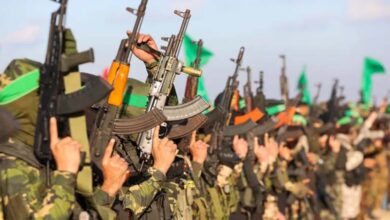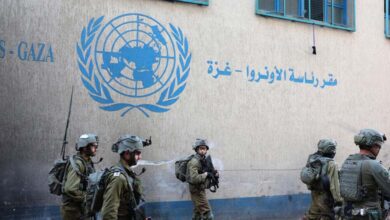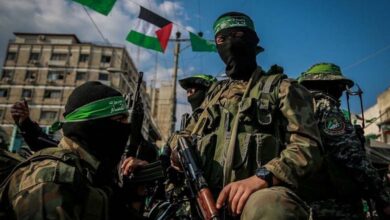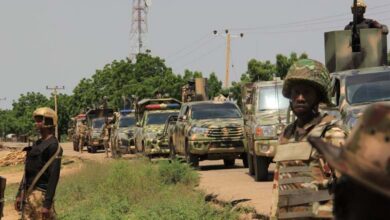Third Anniversary of the War: Ukraine Caught Between Frontline Anxiety and Political Concerns
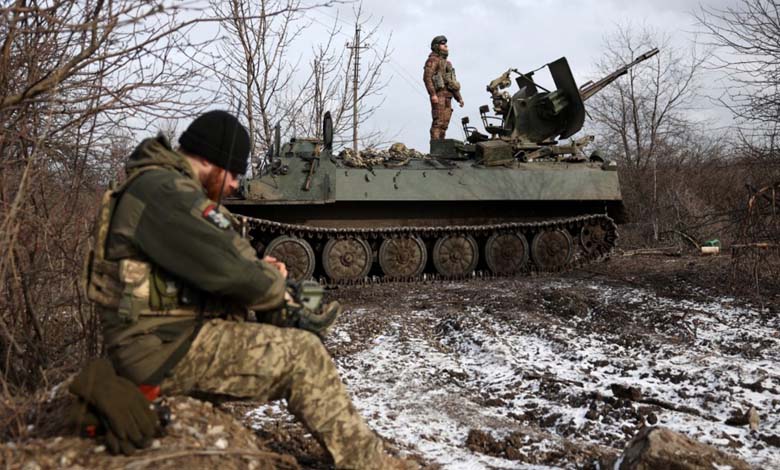
Anxiety in Ukraine is not confined to the presidential palace but echoes in the snow-covered trenches of the east, where frontline gunfire intertwines with political debates.
The recent wave of statements by U.S. President Donald Trump regarding Ukraine has reached the battlefield, where exhausted Ukrainian forces have been repelling Russian attacks for over a year.
One month into his second term, Trump has raised concerns in Ukraine as the U.S. prepares to enter negotiations with Russia over the war.
-
“Strategic ‘Toretsk’ in Russian Hands… Ukraine Faces Supply Line Crisis”
-
New UAE Mediation: Russia and Ukraine Exchange 50 Prisoners
Last Wednesday, Trump stated that Russia was “in a position of strength” in the negotiations to end the conflict. He had previously accused Ukrainian President Volodymyr Zelensky of being a “dictator” who refuses to hold new elections.
Trump also demanded that Kyiv hand over $500 billion worth of rare minerals to the U.S. in exchange for continued support and suggested that “Ukraine could one day be Russian.”
Trump‘s Echo
“Everyone is talking about [Trump‘s remarks], of course,” said Serhiy, a senior sergeant in the 115th Mechanized Brigade, as he rested in an unassuming house on the outskirts of Lyman—a town battered by shelling just seven miles from the front lines held by Russian forces.
-
Ukraine’s Bell Rings across Europe: Cooperation to Build a Defense Industrial Base
-
The Dilemma of Ukraine’s “New Brigades”: A Strategy Caught in the Web of Failure
Like other soldiers who spoke to Foreign Policy this month, Serhiy agreed to an interview on the condition that only his first name be used, in accordance with Ukrainian military protocol.
On February 12, Trump praised a “very long and highly productive” phone call with Russian President Vladimir Putin, during which the two leaders reportedly agreed to meet soon.
According to a report by Foreign Policy, this week’s talks between the U.S. and Russian foreign ministers have only reinforced fears in Kyiv that Ukraine might be sidelined in discussions about its own future. These concerns reached their peak on Wednesday when Trump issued a statement calling Zelensky “a dictator without elections” and urging the Ukrainian president to “act quickly, or there will be no country left for him.”
“In the meantime, we are successfully negotiating an end to the war with Russia,” Trump added.
-
Ukraine and Lebanon: Two Separate Wars That Changed Syria’s Fate
-
“Gripen”… Swedish Fighter Jet Faces its ‘Toughest Test’ in Ukraine
The Frontline
On the battlefield, this possibility has become both a source of concern and hope in recent weeks.
“All wars end in negotiations,” said Oleksandr, a 32-year-old reconnaissance unit commander in the 115th Brigade.
“But things will be difficult because we don’t understand what is happening politically. The Russians will apply pressure, and we don’t know what Trump wants, what he expects from Ukraine, or what Ukraine itself wants. All we know is that the Russians will keep going if they want to.”
-
Russian Women Sending Their Husbands to Fight in Ukraine: What’s the Secret?
-
Zelensky: The War in Ukraine Will End on This Date
According to the American magazine, the relentless Russian assault on the frontline for over a year has severely drained Ukrainian brigades struggling with manpower shortages.
To compensate, both armies have increasingly relied on drones for reconnaissance and strikes.
“Drones are great when the weather is good,” Oleksandr noted. “But if there is wind, rain, snow, or extreme cold, drones simply cannot fly.”
He added, “In any case, you always need men, ideally in coordination with drones. But in infantry brigades, scouts are already becoming a dying breed. … It’s a specialized job that not everyone is willing to do.”
-
Intercontinental Missile Warfare: Russia Launches a Ballistic Missile at Ukraine
-
Weapons and Cancelled Debts: Biden’s “Final” Gifts to Ukraine
The Drone War
Volodya, a 35-year-old military surgeon, speaking from a medical center set up in the basement of a partially destroyed building in Lyman, observed, “It is clear that the war has become more technological—fewer people on the front lines and greater reliance on drones to halt enemy attacks.”
According to a recent report from the International Institute for Strategic Studies, at least 172,000 Russian soldiers have been killed since the war began in 2022. However, 2024 has been the deadliest year since the invasion.
Despite its heavy losses, the Russian army has, in recent months, reached the outskirts of Pokrovsk—the last major Ukrainian-controlled city in southern Donbas—and seized the southern town of Velyka Novosilka.
-
Russia and Ukraine Exchange Records in the Drone Warfare
-
Ukraine War: Russian Advance Shifts the Balance of Power and a Target Bank Ahead of Winter
In Kramatorsk, the Ukrainian-controlled capital of Donbas, about 20 miles south of Lyman, local residents are closely monitoring the front.
After weeks of intense street fighting, Russian forces have slowly advanced toward the Ukrainian defensive stronghold of Chasiv Yar, about 15 miles east of Kramatorsk.
Now, explosions frequently shake the industrial city and the neighboring town of Sloviansk.
Kramatorsk has transformed into a military hub, with hundreds of military vehicles passing through daily on their way to and from the front lines. Despite this, around 80,000 civilians remain in the city—half the population it had before the war.
-
Russia and Ukraine: Will the Third Winter Melt the “Ice of War”?
-
Missile Defense: Iran or Russia? Ukraine Angered by Israel’s “Special Treatment”
The Worst Is Yet to Come
Volodymyr Ivanenko, head of City Hospital No. 1 in nearby Sloviansk, remarked, “It has become clear that a significant portion of the population now wants a ceasefire. If the war doesn’t stop, missiles will continue to strike us, factories and businesses will remain shut, and this nightmare will never end.”
“But we are preparing for the worst—for Trump to halt aid to Ukraine, not just military support, but all assistance,” Ivanenko added.
-
In Ukraine… A New Enemy Emerges, and Russia Bets on “Trench Warfare”
-
CNN reveals details of the deadliest Russian attack on Ukraine since the start of the war
Across the country, Trump’s administration has already forced the U.S. Agency for International Development (USAID) to shut down, leading to the downsizing or closure of dozens of Ukrainian NGOs.
On the front lines, skepticism remains high regarding Trump‘s ability to broker a deal with Moscow.
For Volodya, the military surgeon, “Negotiations are only possible if we can speak from a position of strength. Judging by the situation on the front, we are not in that position right now.”
-
Reward for Ukraine and ‘sanctions’ on Russia: American messages to both sides of the war
-
Attack « Disrupts » Power Supply in Ukraine and Targets Foreign Mercenaries’ Headquarters






